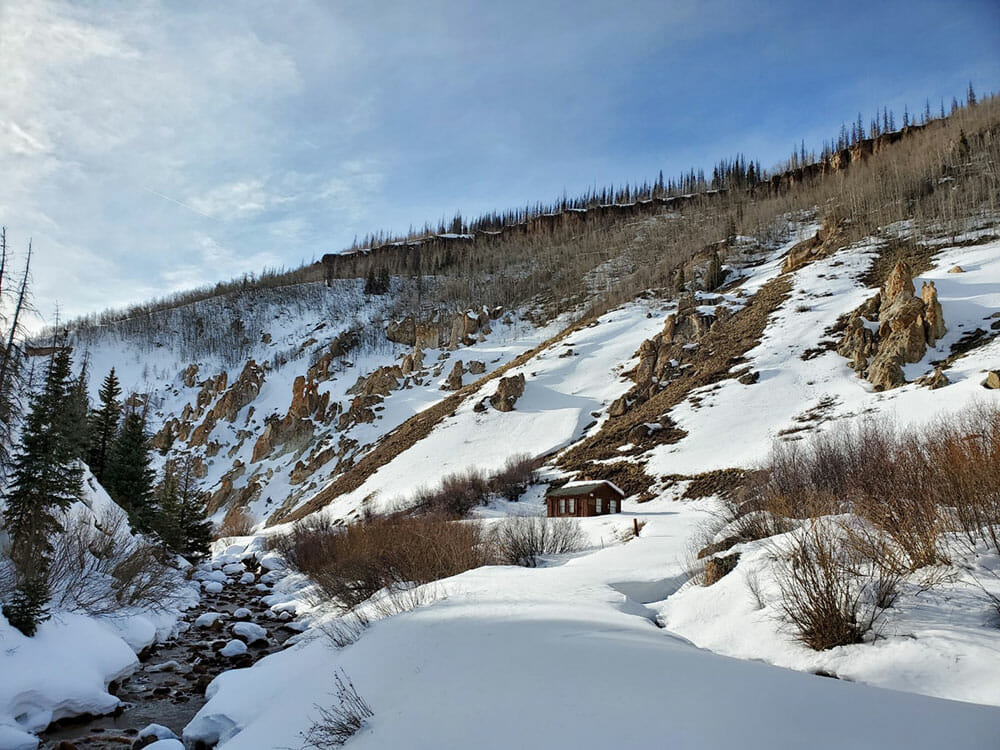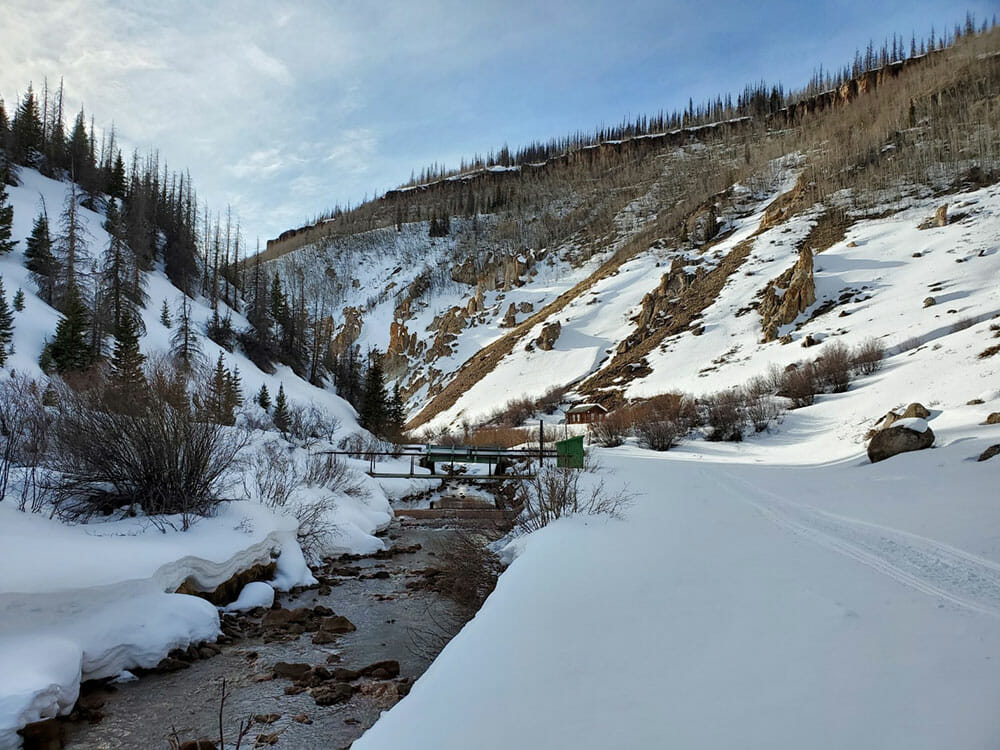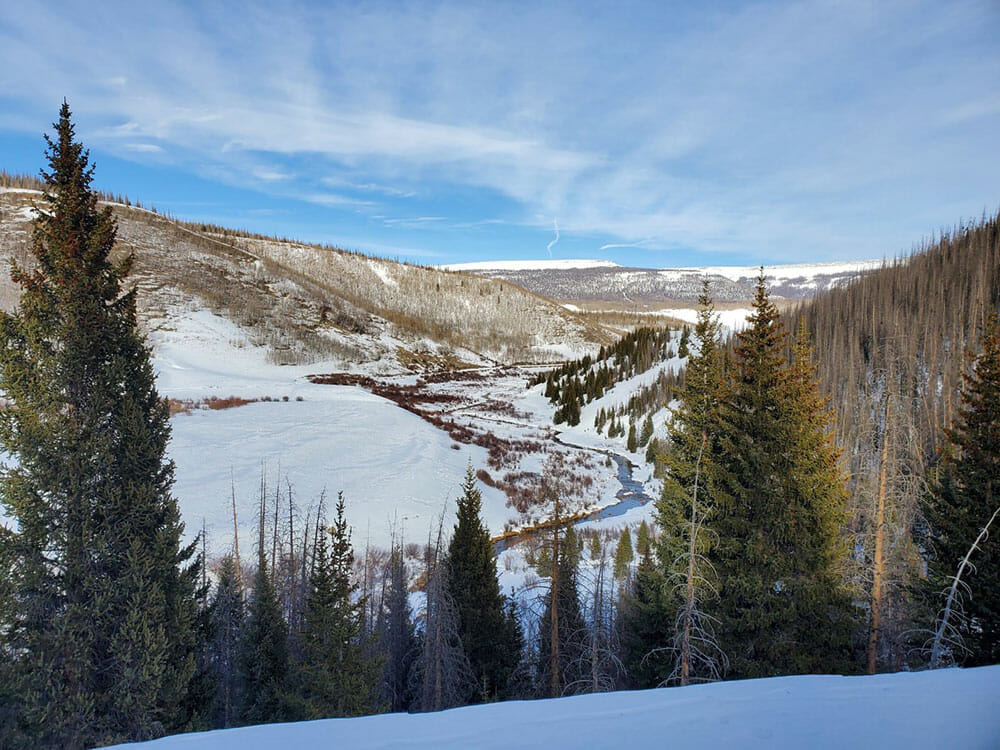In Colorado, deals negotiated by TU and our partners send 600 million much-needed gallons of winter water into the Upper Rio Grande and Conejos
In my family, the holiday season usually involves a healthy dose of puzzle time.
Mom breaks out the ancient folding card table and sets it up close to the fireplace and football games on TV. From Turkey Day to Christmas and sometimes longer, the table stays there, its top shared between jigsaw puzzle pieces and festive food and drink. This tradition is inclusive, with the little ones and visiting friends making random contributions. In the end, almost always the jigsaw is completed.
I’ve come to think of TU’s efforts to restore stream flows below working reservoirs in the Upper Rio Grande Basin of Colorado as puzzle time, with an extended family of water partners filling in the pieces. Like water supply and weather, this puzzle is dynamic, and the completed puzzle looks different every year.
TU’s Winter Flow Program was established on the Conejos River in 2014, and since has grown to include five reservoirs and a diversity of water partners. It’s now an award-winning program that has restored flows and habitat over hundreds of stream miles, helping to accurately account for the various uses of the water stored and later released in these reservoirs while maximizing benefit for the human community and the ecosystems we all depend on.

The Winter Flow Program relies on a community of stakeholders to get the most out of every drop of water, for as many benefits as possible. Our family of puzzle solvers includes water conservation districts, reservoir companies, state and federal resource management agencies, groundwater sub-districts, and water rights owners.
***
The immediately usable (direct diversion to farm) surface water in Colorado’s portion of the Upper Rio Grande was completely appropriated by the year 1900, mostly for farming and ranching in the flat and very dry (< 7inches of rain annually) San Luis Valley.
These early farms – with old and senior water rights – are downstream of the legendary fisheries we love today in the Rio Grande and Conejos Rivers, and thus don’t directly impact these fisheries.
The early 1900s marked the next phase of water development in this region, which involved the capture of water supply during the winter for irrigation use the following year. This development happened quickly, and several high elevation reservoirs were built prior to 1920. Storing the water that would otherwise have been in-stream between November and March set in motion a large-scale degradation of trout habitat.
The habitat impacts could not have been more significant. Not only were streams in the upper Rio Grande and Conejos depleted for 40% of a calendar year, but arguably the 40% hardest on trout, even in good flow conditions.
The Winter Flow Program is designed to restore stream flows by establishing a restoration and ecosystem-based marketplace for businesses seeking to offset their water impacts. This program of reciprocity gives TU the capacity and funding to be a day-to-day contributor within the San Luis Valley water community, and the financial ability to incentivize and provide cost-share with our water partners to adaptively manage water for multiple uses, including restoring stream flows and aquatic habitat.
For example, the Cheyenne Mountain Zoo in Colorado Springs uses approximately 16 million gallons of water every year. In addition to on-site water conservation efforts, the zoo wants to give back by sponsoring a water lease of 16 million gallons through the Winter Flow Program.

We recently embarked on another year of the Winter Flow Program, which began November 1, 2021, and will continue until March 31, 2022. This year we have 13 different water leases enrolled, adding 1,855 acre-feet of water (about 605 million gallons), which will be delivered out of four on-channel reservoirs in the Upper Rio Grande and Conejos Rivers.
Nine out of the 13 leases will travel at least 114 miles, and three of them will travel more than 175 miles. In fact, eight of the leases are deliveries to the New Mexico state line, which means that the water will provide in-stream benefits for trout habitat in New Mexico, an additional 114 miles of the Rio Grande to Cochiti Reservoir.
In every region throughout the West there are water puzzles to solve. Knowing how the plumbing works in your own community is the first step towards solving your watershed challenges. Welcome to the puzzle table — TU’s Winter Flow Program provides a proven formula for putting the pieces together.


